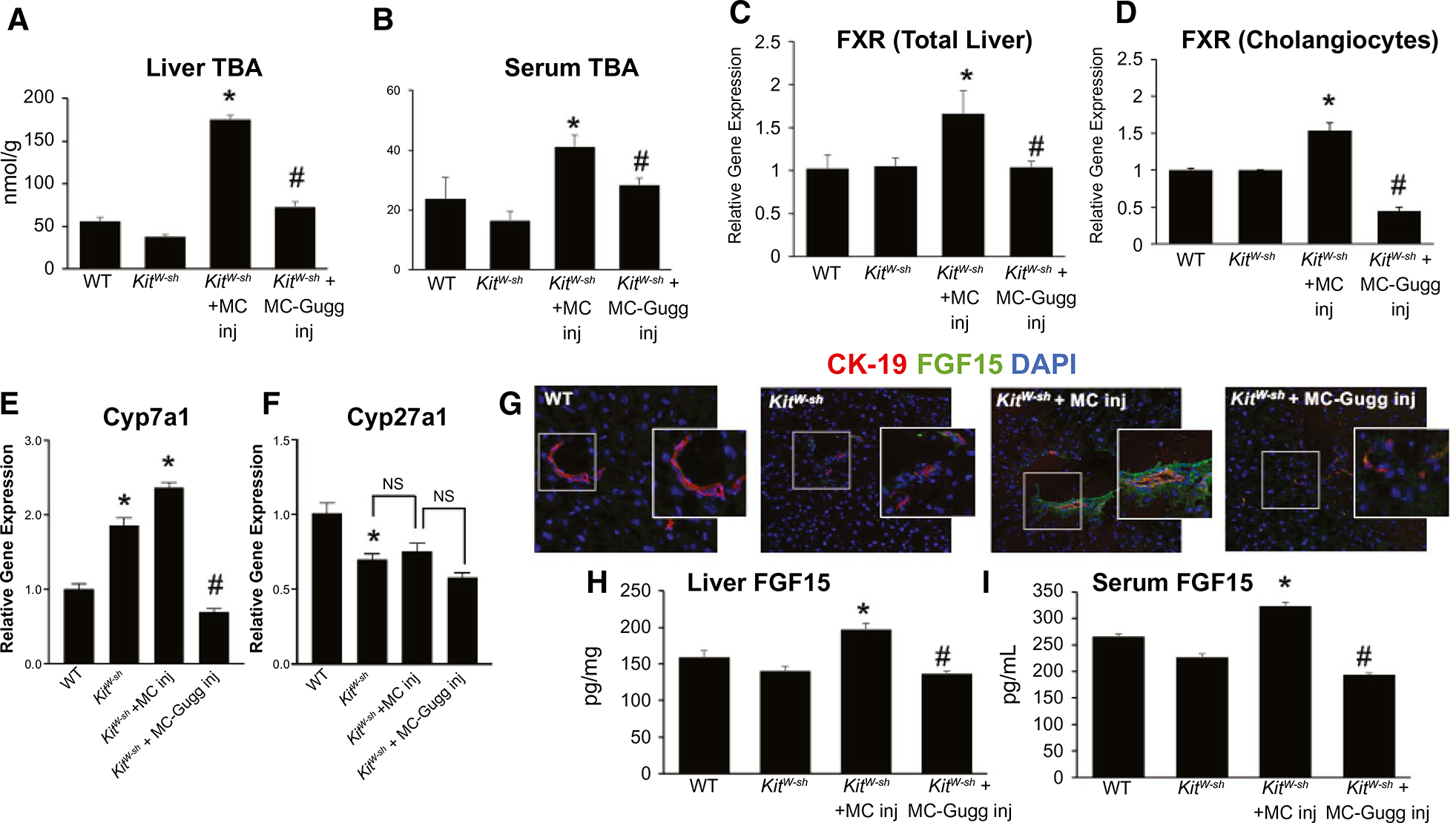FIG. 4.

MC-FXR regulates hepatic and biliary FXR/FGF signaling. Introduction of MCs in KitW-sh mice increased (A) hepatic and (B) circulating TBA content; however, both TBA levels were reduced with MC-FXR inhibition. (A,B) No significant changes were noted between WT and KitW-sh groups. (C) Hepatic and (D) biliary FXR expression increased in KitW-sh mice injected with MCs compared with WT and KitW-sh mice, and inhibition of MC-FXR reduces both hepatic and biliary FXR expression in KitW-sh + MC-Gugg mice. The expression of (E) hepatocyte Cyp7a1 increased in both control KitW-sh mice and KitW-sh mice injected with MCs compared with WT, whereas (F) hepatocyte Cyp27a1 decreased in all groups compared with WT. (E,F) In KitW-sh mice injected with MC-Gugg, Cyp7a1 expression decreased and Cyp27a1 levels remained unchanged compared with control. (G) Biliary FGF15 (green) expression, costained with CK-19 to mark bile ducts (red), and (H) hepatic and (I) serum FGF15 secretion increased in KitW-sh mice injected with MCs, that was subsequently reduced in mice injected with MC-Gugg (G-I). Minimal changes were noted between control groups (G-I). Data are mean ± SEM of n = 8 experiments for qPCR and n = 4 experiments for FGF15 and panFGF EIA from 6–8 mice and n = 4 experiments from 6–8 mice per group for serum and liver TBA. *P < 0.05 vs. WT, #P < 0.05 vs. KitW-sh + MC. Representative images are presented as ×20 with ×40 zoom boxes. Abbreviation: Inj, injury.
